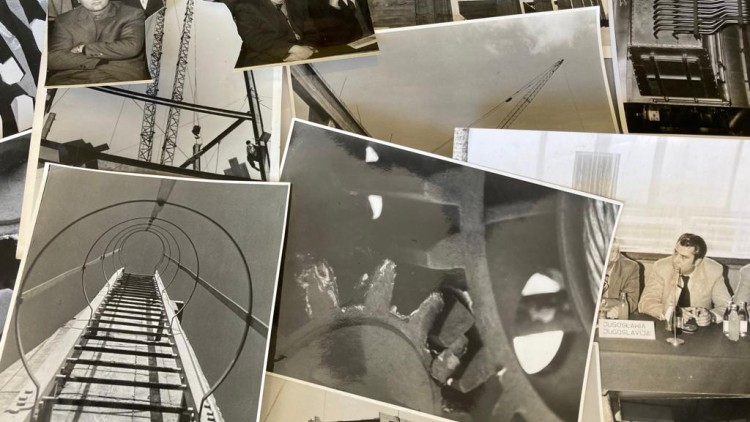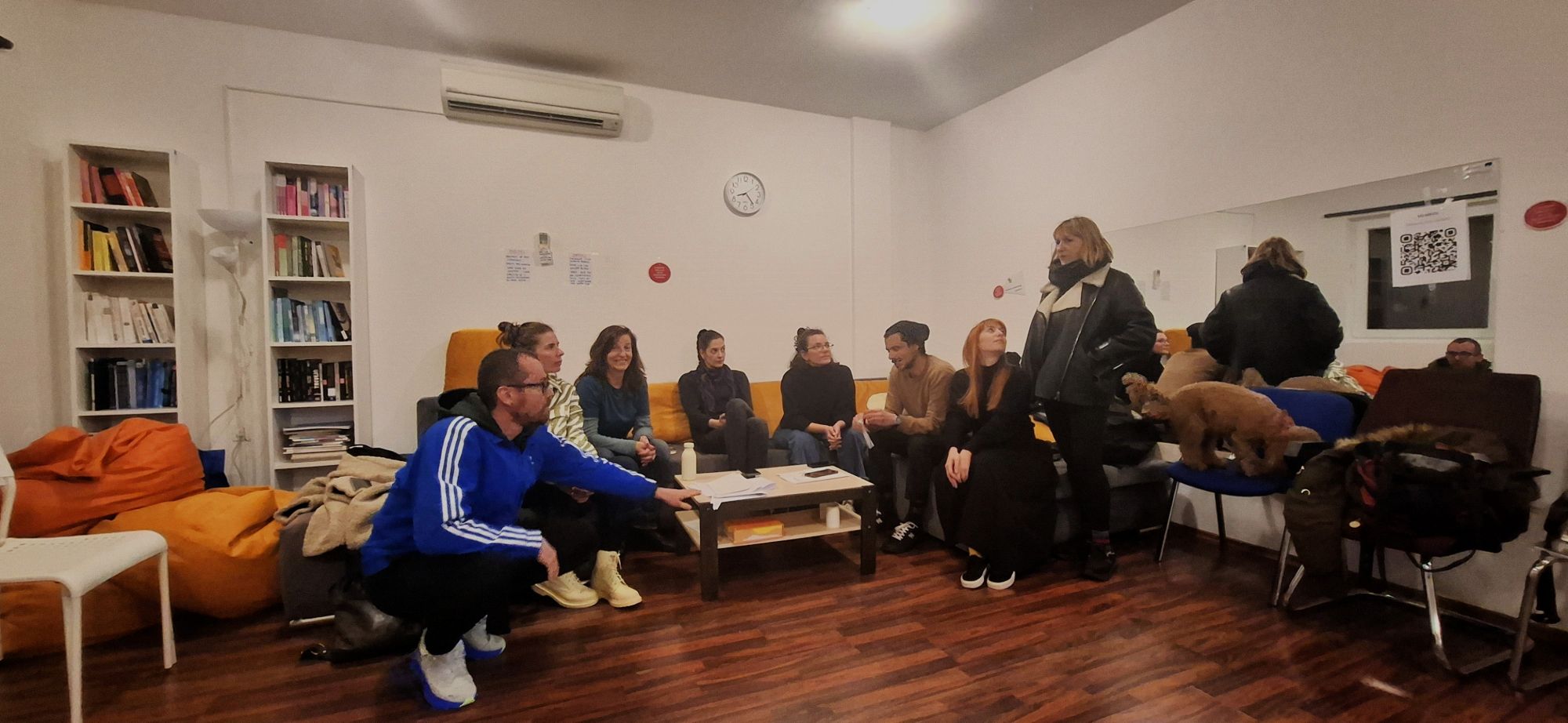Working Group Crnica - First Meeting

Consolidating the Working Group, Introducing the ALILAND project, and New Patrons' Practices and Methodologies
Read the Croatian translation here / Pročitajte hrvatski prijevod ovdje
The first meeting of the "Crnica" working group with the mediator and project coordinator was held on March 18, 2025 in Šibenik, starting at 7 p.m. We gathered in the so-called The Orange House, which is now used by non-governmental organizations. The Orange House is a remnant of the glorious past of Šibenik Elektroferoalloy Factory. After the coordinator presented the basic guidelines of the project and some basic project roadmap, a small but interested group of citizens discussed the unenviable situation of the Crnica area. There are many difficulties faced by this terrain from which the factory chimneys were removed almost 30 years ago: for example, traces of slag are still visible on it. Part of that slag was transferred to Ravni Kotari, to the village of Biljane Donje, where pine trees grow from this toxic waste. Due to the lawsuit filed by the inhabitants of the area, the Republic of Croatia is paying huge penalties. We found that by moving the slag from Crnica to Biljane Donje, a connection was established between the two locations.
The working group thought about how to address the wider community of the city, and even the Republic, with the challenges faced by the residents of Crnica. They discussed how to include children in the Art Nature Based Solutions process, as well as fellow citizens who carry the memory of the industrial history of Šibenik. Also, one of the discussed themes was how to reach the current users of the area: from residents who use it to walk their dogs to those who fish, or young people who are looking for a break from everyday life on that edge of the city.
A book written on this topic by Živko Lazinica was also discussed. The industrial history of Šibenik is not unambiguous: in particular, at the beginning of the 20th century, Crnica was home to a protochemical industry, one of the few carbide factories in the world in general. The demand for electricity was enormous: as many as two hydroelectric power plants were put into operation for this factory at the nearby Krka waterfalls. Today, it is difficult to imagine how the territory of Crnica had looked like before it was taken over by industry: the creation of historical, urban-landscape, economic-political and visual archives is seen by the group as one of the opportunities to reach the truth about what has been going on in the area and what the possibilities are for the future.
Here you can find the text above in Croatian language.

ALILAND Radna grupa Crnica - 1. sastanak
Prvi sastanak radne grupe “Crnica” s medijatoricom i koordinatoricom projekta održao se 18. ožujka 2025. u Šibeniku, s početkom u 19h.
Okupili smo se u tzv. Narančastoj kući, ostatku slavne prošlosti šibenskog TEF-a (Tvornice Elektroferolegura), koju danas koriste nevladine organizacije.
Nakon što je koordinatorica iznijela osnovne smjernice projekta i neki osnovni hodogram projekta, mala ali zainteresirana grupa građana raspravljala je o nezavidnoj situaciji područja Crnice.
Brojne su teškoće s kojima se suočava taj teren s kojeg su tvornički dimnjaci uklonjeni prije skoro 30 godina: npr. na njemu se još uvijek uočavaju tragovi troske. Dapače, dio te troske prenesen je u Ravne Kotare, u selo Biljane Donje, gdje iz tog otrovnog otpada – rastu borovi. Zbog tužbe stanovnika tog područja, Republika Hrvatska plaća ogromne penale. Ustanovili smo da je premještanjem troske sa Crnice u Biljane Donje uspostavljena veza između te dvije lokacije.
Promišljalo se kako adresirati širu zajednicu grada, pa i republike, sa izazovima s kojima se suočavaju stanari Crnice. Razgovaralo se o tome kako u projekt uključiti djecu, te sugrađane koji nose u sebi memoriju industrijske povijesti Šibenika. Također, razmatralo se kako doprijeti do trenutnih korisnika tog područja: od stanovnika koji ga koriste da istrčavaju svoje pse do onih koji love ribu, ili mladih koji na tom rubu grada traže odmak od svakodnevice.
Razgovaralo se i o knjizi koju je na tu temu napisao Živko Lazinica. Industrijska povijest Šibenika nije jednoznačna: konkretno, na Crnici se već početkom 20. stoljeća nalazila protokemijska industrija, jedna od rijetkih tvornica karbida u svijetu uopće. Potrebe za strujom su bile ogromne: za tu tvornicu upogonjene su čak dvije hidroelektrane na obližnjim slapovima Krke. Danas je teško i zamisliti kako je izgledao teritorij Crnice prije no što ga je zaposjela industrija: stvaranje povijesnog, urbanističko-krajobraznog, ekonomsko-političkog i vizualnog arhiva grupa vidi kao jednu od mogućnosti da dopru do istine o tome što se sve događalo s tim područjem i koje su mogućnosti za budućnost.
